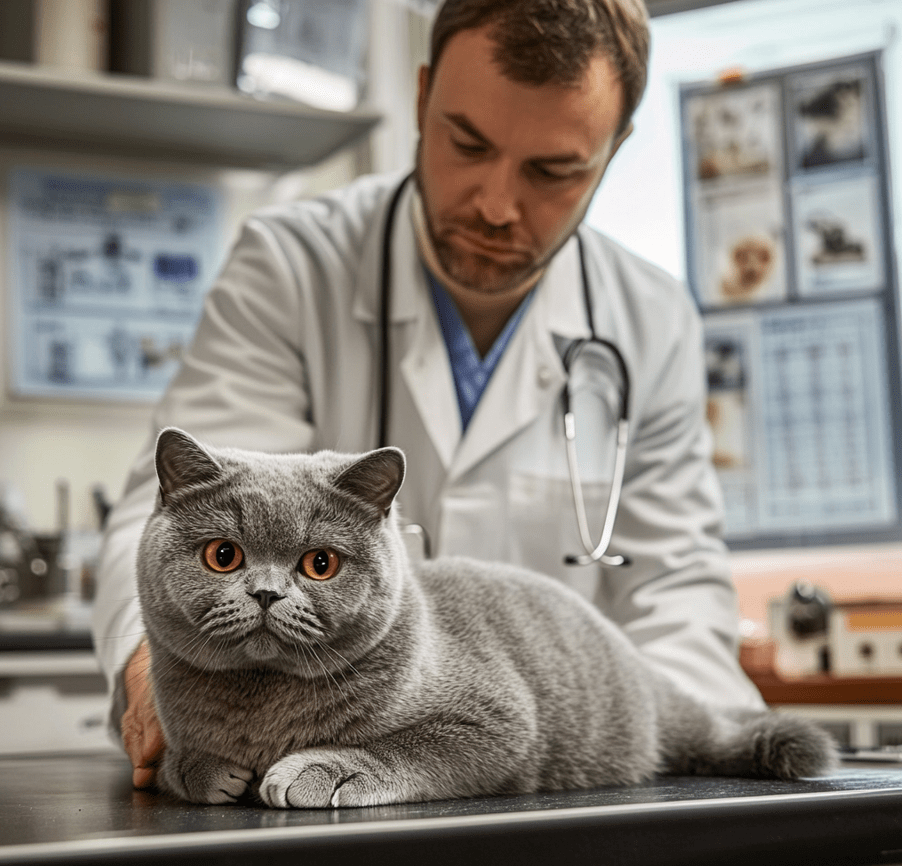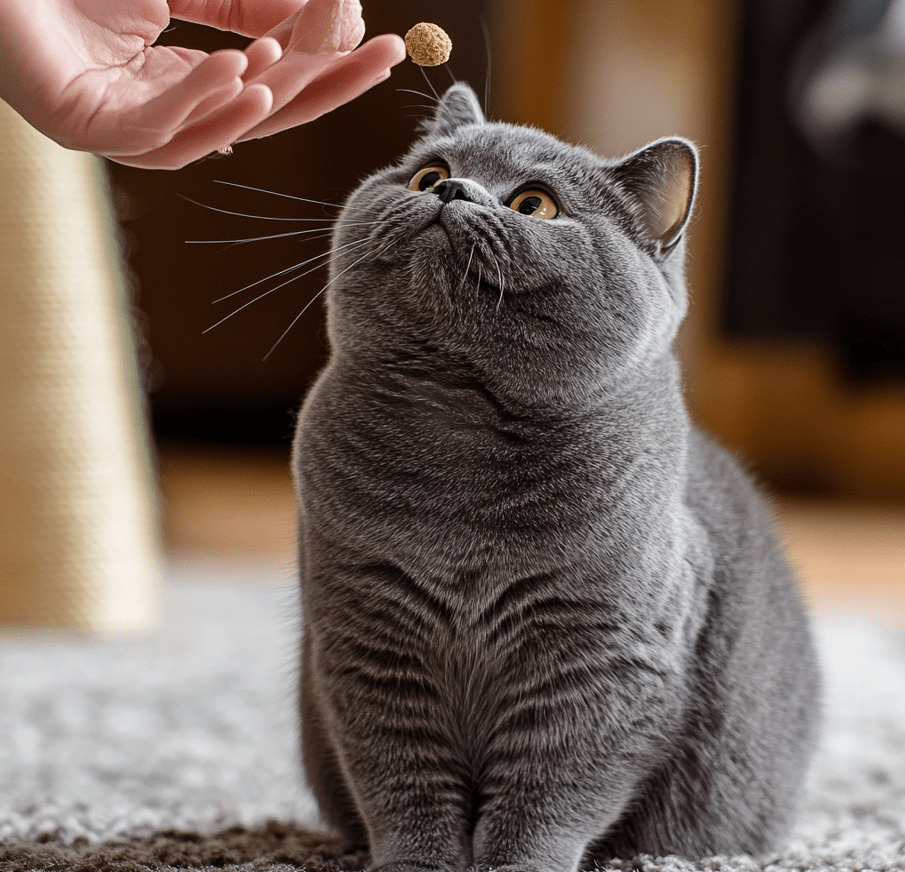
British Shorthairs are beloved for their plush, dense coats and charming personalities, but their thick fur can hide a range of skin issues that require vigilant care. Identifying British Shorthair skin issues early is crucial to ensuring your cat’s health and comfort. From allergies to infections, these problems can cause discomfort if left untreated. This comprehensive guide will help you recognize, manage, and prevent skin issues in your British Shorthair, offering practical tips and expert insights to keep your feline friend thriving.
Why British Shorthairs Are Prone to Skin Issues
The British Shorthair’s luxurious coat, while beautiful, can mask underlying skin problems. Their dense fur traps moisture, dirt, and allergens, creating an environment where skin issues can develop. Additionally, their compact, muscular bodies and sometimes sensitive skin make them susceptible to certain conditions. Understanding why these issues occur is the first step in addressing them effectively.
Factors Contributing to Skin Problems
Thick Fur: The dense coat can conceal redness, bumps, or lesions, delaying detection.
Sensitive Skin: Some British Shorthairs have skin that reacts to environmental or dietary triggers.
Grooming Habits: While they are fastidious groomers, excessive licking can irritate the skin.
Genetic Predispositions: Certain skin conditions, like dermatitis, may have a hereditary component.
Environmental Factors: Allergens like pollen, dust, or fleas can trigger reactions.
By recognizing these factors, you can take proactive steps to monitor your cat’s skin health.
Common British Shorthair Skin Issues
Spotting skin issues under your British Shorthair’s thick fur requires knowing what to look for. Below are the most common skin conditions affecting this breed, along with their symptoms and causes.

1. Feline Dermatitis
Dermatitis is an inflammation of the skin that can result from allergies, infections, or irritants. In British Shorthairs, it often manifests as redness, itching, or scabbing.
Symptoms: Excessive scratching, red patches, hair loss, or crusty skin.
Causes: Food allergies, flea bites, or contact with irritants like certain shampoos.
Detection Tip: Part the fur in areas like the neck or lower back to check for redness or scaling.
2. Flea Allergy Dermatitis (FAD)
Flea allergy dermatitis is one of the most common British Shorthair skin issues. Even a single flea bite can trigger an intense allergic reaction in sensitive cats.
Symptoms: Intense itching, small red bumps, and hair loss, especially around the tail base.
Causes: Allergic reaction to flea saliva.
Detection Tip: Use a flea comb to check for flea dirt (small black specks) in the fur.
3. Ringworm
Despite its name, ringworm is a fungal infection, not a parasite. It’s highly contagious and can affect both cats and humans.
Symptoms: Circular patches of hair loss, scaly skin, or redness.
Causes: Contact with infected animals or contaminated surfaces.
Detection Tip: Look for bald spots with a crusty or scaly appearance, often on the head or limbs.
4. Bacterial or Yeast Infections
Moisture trapped in the fur or minor scratches can lead to bacterial or yeast infections, particularly in skin folds or areas with poor air circulation.
Symptoms: Greasy skin, foul odor, or yellowish crusts.
Causes: Overgrowth of bacteria or yeast, often secondary to allergies or injuries.
Detection Tip: Check for sticky or matted fur, especially around the neck or belly.
5. Food Allergies
British Shorthairs can develop skin issues due to food sensitivities, which often present as chronic itching or rashes.
Symptoms: Itchy skin, ear infections, or gastrointestinal upset.
Causes: Allergies to proteins like chicken, beef, or fish.
Detection Tip: Monitor for skin changes after introducing new foods.
6. Atopic Dermatitis
This condition is caused by environmental allergens like pollen, mold, or dust mites, leading to persistent itching.
Symptoms: Licking or chewing at paws, red or inflamed skin, and ear infections.
Causes: Seasonal or year-round exposure to allergens.
Detection Tip: Look for symmetrical hair loss or redness on both sides of the body.
How to Spot Skin Issues in Your British Shorthair
Detecting skin problems under your British Shorthair’s thick fur requires a combination of observation, regular grooming, and hands-on checks. Here’s a step-by-step guide to help you identify issues early.

Step 1: Observe Behavioral Changes
Cats with skin issues often show subtle signs of discomfort. Watch for:
Excessive Scratching or Licking: Persistent grooming, especially in one area, may indicate irritation.
Restlessness: Discomfort can make your cat agitated or less social.
Changes in Coat Appearance: Dull, matted, or thinning fur can signal underlying problems.
Step 2: Perform Regular Grooming
Grooming is essential for spotting British Shorthair skin issues. Use these tips:
Brush Weekly: Use a soft-bristle brush to remove loose fur and check for abnormalities.
Part the Fur: Gently separate the fur to inspect the skin, focusing on areas like the neck, back, and belly.
Check Skin Folds: British Shorthairs have compact bodies, so examine areas where skin may fold, like the armpits.
Step 3: Conduct Hands-On Skin Checks
Feel for abnormalities during petting sessions:
Lumps or Bumps: Small growths or scabs may indicate infections or allergies.
Heat or Redness: Warm, inflamed skin can signal irritation or infection.
Texture Changes: Greasy, scaly, or crusty skin is a red flag.
Step 4: Monitor High-Risk Areas
Certain areas are more prone to skin issues:
Base of the Tail: Common for flea allergies.
Ears and Face: Susceptible to ringworm or atopic dermatitis.
Paws and Legs: Often affected by allergies or excessive licking.
Step 5: Use Diagnostic Tools
If you suspect a problem, consider these tools:
Flea Comb: Detects fleas or flea dirt.
Black Light: Some ringworm strains fluoresce under UV light (consult a vet for confirmation).
Skin Scraping: A vet can perform this to diagnose infections.
Preventing British Shorthair Skin Issues
Prevention is key to keeping your British Shorthair’s skin healthy. By addressing potential triggers and maintaining a consistent care routine, you can reduce the risk of skin problems.

1. Maintain a Regular Grooming Routine
Brush Weekly: Removes dirt, dander, and loose fur, improving air circulation to the skin.
Bathe Sparingly: Use a cat-safe shampoo to avoid stripping natural oils.
Dry Thoroughly: Ensure the coat is completely dry to prevent moisture-related infections.
2. Implement Flea Control
Use Vet-Approved Products: Topical or oral flea preventatives are effective.
Treat the Environment: Vacuum carpets and wash bedding to eliminate flea eggs.
Check Regularly: Even indoor cats can get fleas from visitors or other pets.
3. Optimize Nutrition
High-Quality Diet: Feed a balanced diet with omega-3 fatty acids to support skin health.
Allergy Testing: Work with a vet to identify and eliminate food allergens.
Hydration: Ensure access to fresh water to maintain skin moisture.
4. Control Environmental Allergens
Clean Bedding: Wash your cat’s bedding weekly to reduce dust and dander.
Use Air Purifiers: Minimize airborne allergens like pollen or mold.
Limit Exposure: Keep your cat indoors during high-pollen seasons.
5. Schedule Regular Vet Checkups
Annual Exams: Catch early signs of skin issues during routine visits.
Skin Testing: Vets can perform allergy or fungal tests if symptoms persist.
Vaccinations: Keep vaccinations up to date to prevent secondary infections.
When to See a Veterinarian
While some skin issues can be managed at home, others require professional attention. Contact your vet if you notice:
-
Persistent scratching or hair loss lasting more than a few days.
-
Open sores, bleeding, or foul-smelling skin.
-
Behavioral changes like lethargy or reduced appetite.
-
Signs of infection, such as pus or swelling.
Your vet may recommend:
Skin Scrapings or Biopsies: To diagnose infections or tumors.
Allergy Testing: To identify environmental or food triggers.
Medications: Antifungals, antibiotics, or steroids to treat underlying conditions.
Home Remedies for Mild Skin Issues
For minor irritations, these vet-approved home remedies can provide relief. Always consult your vet before trying new treatments.
1. Oatmeal Baths
How It Helps: Soothes itchy or inflamed skin.
Method: Use a cat-safe oatmeal shampoo or make a paste with ground oats and water.
Frequency: Once a week for mild irritation.
2. Coconut Oil
How It Helps: Moisturizes dry skin and has antifungal properties.
Method: Apply a small amount to affected areas, ensuring your cat doesn’t lick it off excessively.
Caution: Use sparingly to avoid greasy fur.
3. Aloe Vera
How It Helps: Reduces inflammation and promotes healing.
Method: Use pure, pet-safe aloe gel on small irritated areas.
Caution: Ensure the product is free of toxic additives.
4. Hypoallergenic Wipes
How It Helps: Cleanses skin without harsh chemicals.
Method: Wipe down affected areas to remove allergens or debris.
Frequency: Daily for mild symptoms.
Myths About British Shorthair Skin Issues
There are several misconceptions about British Shorthair skin issues that can lead to improper care. Let’s debunk them:
Myth: British Shorthairs don’t get skin issues because of their thick fur.
Truth: Their fur can hide problems, making regular checks essential.
Myth: All skin issues are caused by fleas.
Truth: Allergies, infections, and genetics also play significant roles.
Myth: Frequent bathing prevents skin problems.
Truth: Overbathing can strip natural oils, worsening skin issues.
Expert Tips for Long-Term Skin Health
To keep your British Shorthair’s skin in top condition, follow these expert recommendations:
Use a Humidifier: Prevents dry skin in arid climates.
Monitor Stress: Stress can exacerbate skin issues, so provide a calm environment.
Keep a Skin Journal: Track symptoms, diet changes, and treatments to identify patterns.
Invest in Quality Grooming Tools: A good brush and flea comb make a big difference.
Conclusion

Caring for your British Shorthair’s skin is a vital part of ensuring their overall health and happiness. By understanding the causes of British Shorthair skin issues, recognizing symptoms early, and implementing preventive measures, you can keep your cat’s coat and skin in pristine condition. Regular grooming, a balanced diet, and prompt veterinary care are your best tools for managing and preventing skin problems. With the tips and insights in this guide, you’ll be well-equipped to spot issues under your British Shorthair’s thick fur and provide the care they deserve.
If you suspect a skin issue, don’t hesitate to consult your veterinarian. Your British Shorthair’s comfort and well-being depend on your vigilance and proactive care.




